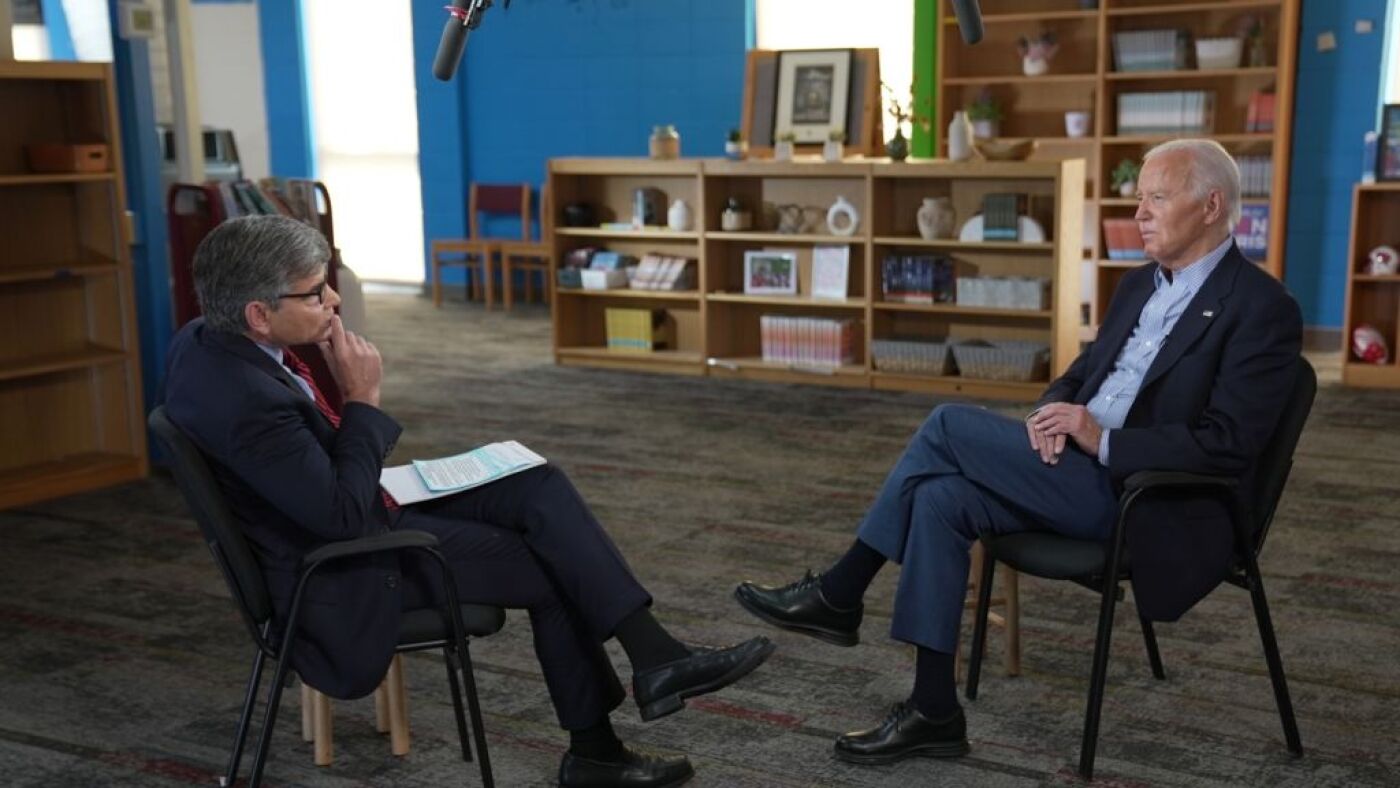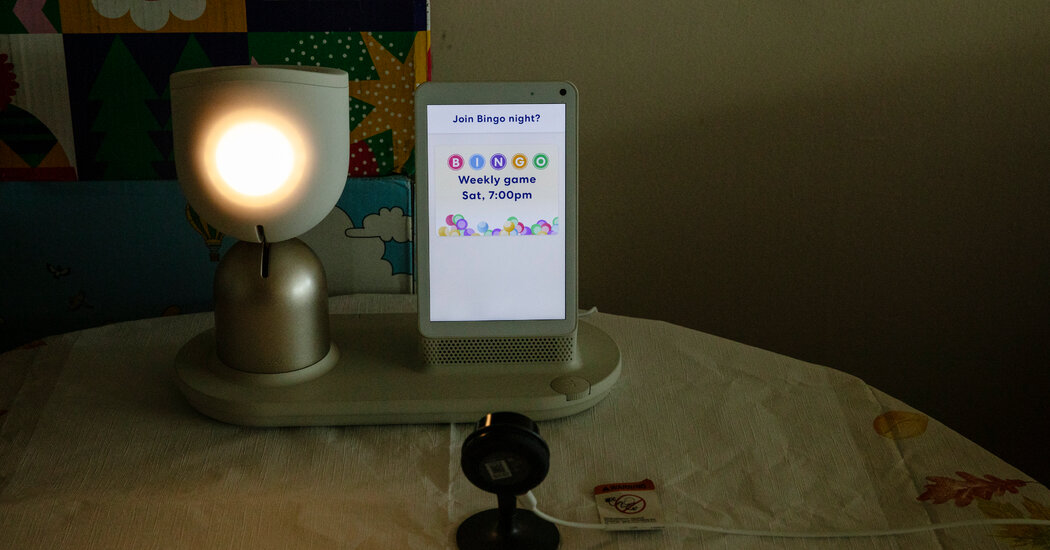- Monday Morning Memo
- Posts
- Campaign in Crisis
Campaign in Crisis
Feeding Frenzy Befalling Biden, Hochul's Hat in the Ring, Upstate NY Tech Win
The feeding frenzy, primarily from fellow Democrats, that has descended on President Joe Biden continues and, frankly, shows no signs of abating.
Biden, both in words and actions, has made clear that he has little intention of quitting or exiting the presidential race without a protracted and public battle, but that has done nothing to quiet his critics. On Saturday, Rep. Angie Craig (D-Minn.), one of the most endangered Democratic Members of the House, called on Biden to drop out of the race saying, “There is only a small window left to make sure we have a candidate best equipped to make the case and win.” Craig cited Biden’s debate performance and the lack of follow-up. Craig is the fifth Congressional Democrat to publicly call on Biden to step down. (The Washington Post is running a helpful tally.)
I’ve never been more optimistic about the future of our country.
— Joe Biden (@JoeBiden)
11:37 PM • Jul 6, 2024
This is an important time for the Biden campaign as they try to stem the bleeding.
With Congressional Democrats returning to Washington today for the first time since Biden’s shaky debate performance, the next few days are expected to be emotional and potentially combative as lawmakers weigh whether previously private conversations about Biden’s standing as the nominee should become more public.
Failure is not an option.
We must succeed.
For the People.
— Hakeem Jeffries (@RepJeffries)
12:18 PM • Jul 5, 2024
House Minority Leader Hakeem Jeffries (D-N.Y.) also convened senior House Democrats, including the ranking members of Congressional committees to discuss the situation. Jeffries has been approaching the controversy with his usual caution, urging his colleagues to be measured in their comments about Biden while also not pressuring them to support Biden. The weekly meeting normally happens on Wednesdays and was moved up to try to stay ahead of events. Early reports indicated the participants are as divided as the rest of the Democratic Party but, significantly, several top Democrats reportedly declared it was time for Biden to step aside, including New Yorkers Jerry Nadler and Joe Morelle, as well as Adam Smith (Wash.) and Mark Takano (Calif.). Most expressed support for Vice President Kamala Harris to take over at the top of the ticket.
Also receiving scrutiny is the decision by Rep. James E. Clyburn (D-S.C.), one of Biden’s top allies, to cancel a scheduled appearance on CBS’s “Face the Nation” only hours before he was scheduled to appear. Hmm.
Biden on Friday sought to use a battleground-state rally and a prime-time television interview to rally supporters. Some of his allies were assured by the performance, but Biden’s defiance ran the risk of driving more skittish lawmakers to go public with their concerns. In the interview, Biden dismissed any polls that have him losing to Trump (“All the pollsters I talk to tell me it’s a toss-up.”) or those that show his approval rating at 36 percent (“That’s not what our polls show.”) and insisted that he had no firsthand knowledge of any Democratic discontent (“They all said I should stay in the race... none of the people said I should leave.”)
The President spent much of Saturday at his home in Wilmington, Del., but he joined a biweekly meeting of his campaign’s co-chairs. The meeting included several high-level allies, including Gov. Gretchen Whitmer (D-Mich.), Sen. Tammy Duckworth (D-Ill.), and Clyburn.
Facts are facts: @JoeBiden and @KamalaHarris have delivered for the American people.
— Gretchen Whitmer (@gretchenwhitmer)
1:35 PM • Jul 7, 2024
We also learned more about the week where the wheels came off. According to a Washington Post analysis, Biden’s motorcade was set to depart the Atlanta Hyatt Regency at 8 p.m. and reporters were rushed from dinner into vans, but Biden didn’t leave until 27 minutes later! He arrived at the studio with less than 30 minutes to spare, telling aides he did not need the CNN studio tour to show him the camera angles and lights. Wow.
Biden was so confident that he called for a June debate, quoting Clint Eastwood—“Make my day, pal,” he told Trump. His campaign started selling cans of water called “Dark Brandon’s Secret Sauce.” But by the time it was over, Trump decided against going to the spin room because Biden did so poorly. “No one was more shocked at Biden’s performance than Donald Trump,” said one adviser.
I don't know what they've got in these performance enhancers, but I'm feeling pretty jacked up.
Try it yourselves, folks.
See you in a bit: joe.link/SecretSauce
— Joe Biden (@JoeBiden)
12:34 AM • Jun 28, 2024
The campaign narrative that this was one bad day is belied by other bad decisions. A strong rally in North Carolina was followed by a fundraiser at a $100 million East Hampton mansion two days later, where donors were stunned Biden spoke so briefly—about six minutes—and left without taking questions. Then in New Jersey, at the Governor’s private villa overlooking the Navesink River, Biden spoke so softly that a crowd of 50 craned their heads to hear him speak from a teleprompter. Over dinner that night, participants reported a detailed discussion of policy, though Biden was hard to hear and sometimes struggled to complete his thoughts.
In this election, your freedom, your democracy, and America itself is at stake.
— Joe Biden (@JoeBiden)
5:38 PM • Jun 28, 2024
The Biden team thought the situation was under control. The Post wrote, “This was a team that had seen a crisis like this before. They thought they had a handle on it, with memos calling for calm and internal polling showing little change after the debate. The ad featuring the North Carolina rally was cut and debuted on MSNBC’s ‘Morning Joe.’”
Yet, the facade was crumbling. Internal dissention was leaked to the press about the process of debate preparation and whispers of dissent within the Biden family itself.
The real damage—and existential doubts—had spread throughout the Democratic Party.
The Post quoted one Democratic Member of Congress: “Monday is the day this turned—this has turned. Everyone lost confidence by Monday. I started hearing from donors, members, everyone on Monday. It was only getting worse.”
Former Speaker Nancy Pelosi (D-Calif.) asked, “I think it’s a legitimate question to say, ‘Is this an episode or is this a condition?’” Rep. James E. Clyburn (D-S.C.) called for Biden to do town halls. Sen. Sheldon Whitehouse (D-R.I.) said people need to know that Biden and his team “are being candid with us.”
It took until Tuesday afternoon for Biden to start contacting Democratic leaders.
A Wednesday meeting with Democratic governors, a meeting demanded by the governors themselves, raised more concerns. All still publicly supported him and offered public praise, but there were plenty of concerns. The most pointed criticism reportedly came from Colorado Gov. Jared Polis, Maine Gov. Janet Mills, and New Mexico Gov. Michelle Luján Grisham, who all voiced concern about the direction of the race in their states following the debate. Polis told Biden that people had come to him with a message: Tell Biden to drop out.
Vice President Harris, enjoying a moment as most party leaders with doubts about Biden concluded she was the only viable alternative—the only candidate who could claim incumbency and spend the money Biden raised—hit back in the governors’ meeting, demanding everyone get behind Biden. “This is about our f---ing democracy,” she declared.
There is a broad agreement on what Biden should do and it is to follow Clyburn’s advice about getting in front of voters, through town halls, rallies, press conferences, and so on.
How does the Biden campaign rebound after the damaging debate performance? Our Jack O’Donnell joined Hardline’s Joe Beamer on WBEN. Listen to the clip, and the full interview from 10:35-10:55 a.m. is here. |
A Friday rally in Madison, Wisconsin showed that Biden can still give a rousing performance that has the crowd on their feet, but following the pattern, Biden showed plenty of strength and just as much weakness. Talking about his debate preparation, Biden simply trailed off again, just as he did during the debate. He said, “I get quoted. The New York Times had me down at 10 points before the debate, nine now, or whatever the hell it is. The fact of the matter is, what I looked at is, that he also lied 28 times.” At one point, Stephanopoulos asked if he had watched the debate afterward. The President paused and then said, “I don’t think I did. No.”
The larger question for Biden and his campaign, meanwhile, is how does Biden win in November when 7 in 10 voters do not think the President is up for the job? Team Biden has been counting on making this campaign a referendum on Trump, but how does that happen when additional Democrats are calling for Biden to drop out of the race daily?
Some Democrats have pointed out that Trump faced similar calls to drop out in 2016, as well as comparable defections from Republicans—many of whom also began that campaign with serious doubts about his candidacy—and that he weathered those doubts to win. More importantly, they note that many Republicans continue to harbor serious doubts about Trump, but are willing to set those aside for party unity, and victory in November. They ask when Democrats will put on their own big-boy pants and focus on winning. Perhaps Democrats are simply too fractured to do that or perhaps they hold themselves and their party to a higher standard.
On Friday night, Biden said that only “the Lord Almighty” could convince him to drop out of the race. On Saturday, he arrived at St. Joseph’s on the Brandywine for the Mass. We will be watching.
⛪ Despite the media's meltdown, President Biden remains unbothered, quietly attending Mass at St. Joseph on the Brandywine, as he always does.
He's attended church more in office than any president in 70+ years. Meanwhile, Christian Conservatives overwhelmingly support a man… x.com/i/web/status/1…
— Chris D. Jackson (@ChrisDJackson)
10:28 PM • Jul 6, 2024
One supporter who has not wavered is Governor Kathy Hochul, remaining steadfast in her support for Biden. Speaking after the meeting with the governors on Wednesday, Hochul offered, “Representing states like New York and all across America, we came together tonight to listen to President Biden tell us in his own words what his plans were. I’m here to tell you today, President Joe Biden is in it to win it. And all of us said we pledged our support to him because the stakes could not be higher. We feel very confident in his abilities. We talked about the plan and how he’s going to be very focused on issues that matter to Americans, and I felt very confident coming out of this meeting as well.”
Democratic governors had a conversation at the White House with Joe Biden Wednesday, addressing concerns about the president's health and calls to drop out of the race. "Joe Biden is in it to win it," New York Gov. Kathy Hochul told reporters after the meeting.
— Newsweek (@Newsweek)
4:32 PM • Jul 4, 2024
New York is a decidedly blue state, but Biden’s unpopularity could be a drag on candidates down ballot, including in competitive Congressional races in Syracuse, the Hudson Valley, and on Long Island. Hochul, who will serve as a superdelegate for the Biden campaign at the Democratic National Convention in August, has long been rumored to be eyeing a position in the Biden administration. Publicly, Hochul has indicated she is planning on running for another term as Governor saying, “2026, it may be a long way off, I'm running, I'm preparing for that race.”
New York Gov. Kathy Hochul plans to run for another term as governor in 2026, she told reporters Tuesday at an event in New York City.
— Spectrum News NY1 (@NY1)
9:14 PM • Jul 2, 2024
New York City Mayor Eric Adams, also under fire and facing a tough reelection campaign, has found a loyal defender of his own. Adams gleefully shared an op-ed from Reverend Al Sharpton that praised Adams and suggested he was being treated unfairly by the press, much like former New York City Mayor David Dinkins. At his weekly press conference, Adams said, “I really want to thank Reverend Sharpton. He really just laid [it] out. When you read how this administration is covered, you’d think you’re living in a different city!” The alliance with Sharpton, one of New York City’s most influential black leaders, serves to solidify Adams’ support among that key demographic. (Adams went as far as to re-baptized by Sharpton at Rikers Island earlier this year.) Adams victory over a crowded primary field in 2021 is due in large part to his support among African-Americans, including in Southeast Queens and Central Brooklyn where he won overwhelmingly. His campaign will need to replicate that success if he is to win reelection against potential primary candidates like New York City Comptroller Brad Lander, former Comptroller Scott Stringer, and State Senator Zellnor Myrie.
The biggest news of the week was the announcement from the federal government that the Upstate New York “tech hub,” comprised of companies and research institutions from Syracuse to Buffalo, has been awarded $40 million in funding to establish domestic supply chains for semiconductors and other critical technologies. The Upstate New York bid was one of 31 tech hubs established in 2023, but only 12 across the country have been selected for this level of federal funding. Senate Majority Leader Chuck Schumer, who helped author the CHIPS and Science Act that established the tech hub framework said, “This isn’t just a national spotlight on Upstate New York. This is the federal government saying that the I-90 corridor is America’s semiconductor superhighway.” Schumer has pointed to Upstate New York’s world-class colleges and universities, strong workforce, and already established tech companies in the region such as Micron, as key components for the bid’s success. “It’s so historic, as you know what it means for the future,” Schumer said. “You know how I always hate jobs leaving Upstate New York and people thinking this beautiful place with beautiful people was on the decline. And now there’s a new optimism and hope because of what’s happened here.”
I’m so proud to deliver the Buffalo-Rochester-Syracuse Tech Hub!
Upstate New York is on the road to becoming America’s Semiconductor Superhighway!— Chuck Schumer (@SenSchumer)
8:34 PM • Jul 3, 2024
Under the plan, the University at Buffalo will be responsible for microchip supply chain improvements, Monroe Community College will take the lead on workforce development, and Syracuse University will assist with commercialization of related technologies.
On-shoring the supply chain for critical technologies, most of which are currently in Asia, has been a top priority for the Biden White House. Commerce Secretary Gina Raimondo said the grant is part of a broader push to spread out funding for technological innovation and advanced manufacturing offering, “The reality is, there are smart people, great entrepreneurs, and leading-edge research institutions all across the country. And we’re leaving so much potential on the table if we don’t get them the resources to compete and win in the tech sectors that will define the 21st century global economy.”
In Washington, D.C., the House of Representatives will return today from their Fourth of July recess. The House Appropriations Committee has a full slate of markups scheduled for FY 2025 appropriations bills, including the Commerce, Justice, Science, and Related Agencies Bill, the Interior, Environment, and Related Agencies Bill, the Energy and Water Development, and Related Agencies Bill, the Labor, Health and Human Services, Education, and Related Agencies Bill, the Transportation, Housing and Urban Development, and Related Agencies Bill, and the Agriculture, Rural Development, Food and Drug Administration, and Related Agencies Bill.

The Senate will be back next week, with just three weeks remaining until the August Recess. Other than an abortion messaging vote and nominations scheduled for next week, the Senate calendar is rather empty. Senator Schumer is deciding whether to use the remaining time to try and get something done, or pursue a series of “show” votes that will almost certainly fail, but will be politically beneficial to vulnerable incumbents in November. One “show” vote candidate is the lingering tax bill authored by Democratic Senators Ron Wyden of Oregon and Tina Smith of Minnesota that extends the child tax credit and provides research and development tax credits to businesses. Schumer could also force a vote on a railway safety bill that stemmed from the train disaster in East Palestine, Ohio. Both measures would struggle to gain the necessary support to pass, but would give frontline Democratic Senators such as Sherrod Brown in Ohio political cover ahead of the election. Should Schumer elect to use the last two weeks to try and advance a Democratic policy priority, lawmakers could consider legislation regulating social media companies, dubbed the The Kids Online Safety Act, or the RECOUP Act—a bill that aims to strengthen regulators' ability to bring enforcement actions against executives who fail to appropriately manage their bank.
Finally… Considering a career change? You should check out this sweet gig. |

Client News


Do you support reforms to the U.S. Supreme Court, including term limits, ethics requirements, and expanding the number of Justices? |
Results of the Last Poll
Should President Biden step aside as the Democratic nominee in the 2024 presidential election?

 |  |
 |  |

This Day in History
July 8, 1776: Colonel John Nixon gives the first public reading of the Declaration of Independence to an assemblage of citizens in Philadelphia.
News
Worth a Read
 | Two Upstate NY Hotels Among Best in the WorldReaders voted for hotels based on their rooms and facilities, location, service, food, and value. |
















